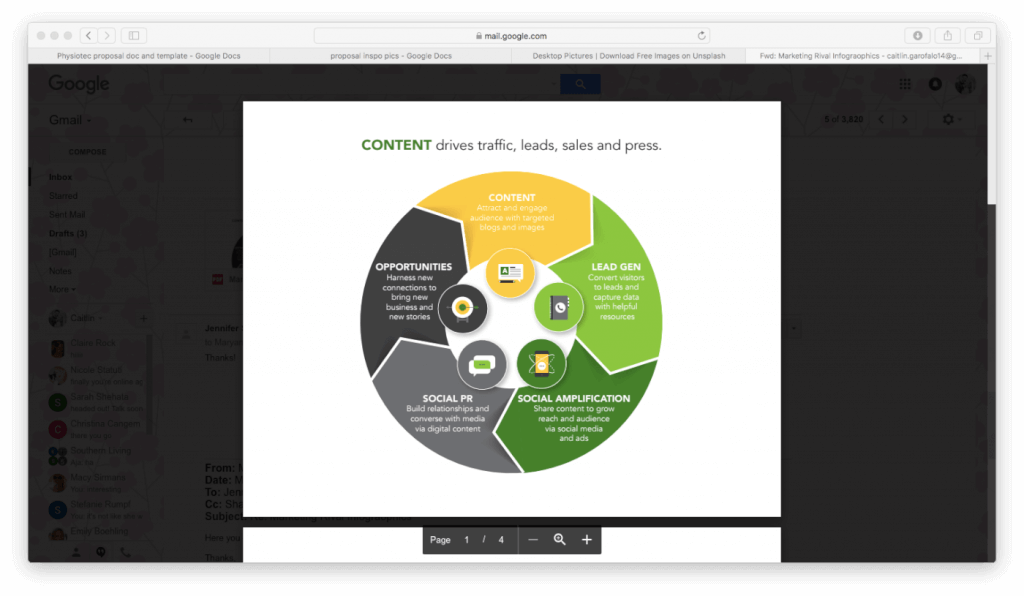When you run the one person marketing department for a company, drafting budgets and posting to Facebook in the same day, the slick print campaigns and glowing Insta stories of the big brands can make successful marketing feel out of reach. And maybe a soul crushing endeavor.Don’t let it get to you. You can grow a successful marketing strategy even if you don’t have annual sales in the seven digits. What you need are some principles taken from the big guys and a budget that’s right sized for your company.
Early this year The CMO Survey revealed that companies in retail wholesale are now spending about 10 percent of their overall budget on marketing. That may seem out of reach for you today, but consider it in terms of future growth. In our business, representing brands like Polycor and Vetrazzo, we find that increases in marketing spend are directly related to increased revenue.
Gone are the days where a company’s only option was to buy a print spread in a high profile design mag. Now, thanks to the power of digital marketing, we have the power to influence buyers at every stage of the buying process using our own website as the key tool.
Begin with blog content, and launch your marketing from there.
Your first step is this: Embrace a mindset change from manufacturer or distributor to magazine publisher.
Your website and blog are your publishing platform to share your story, and you can craft it to attract your ideal buyer. If you’ve already started publishing, look at your posts with fresh eyes. Is your audience clear? Are you targeting another business owner or a customer? Are you talking to homeowners or designers?
In order for your blog to resonate with readers it has to speak specifically to one persona. A dirt bike company wouldn’t write stories to both dirt bike enthusiasts and their moms. You shouldn’t either. To help you focus each blog for the right persona (aka, your ideal customer) identify the pains and problems of one, specific persona for each piece. What are the questions your salespeople frequently field from this person? Each pain and each question is fodder for blogs that will attract this prospect as she searches on Google.
Pick a big company with marketing you like to model after.
One of our clients is Polycor, a North American stone quarrier.
You won’t find this company’s ads in print publications. Instead, the Canadian-based company has invested a significant portion of its budget in digital marketing, with special emphasis on content marketing.
Since 2014, Polycor has consistently published blogs and social media just for members of the stone trade. In focusing on this sector they’ve developed a loyal readership and have seen a direct impact on sales. This year, one salesperson told us that when he walked into a prospect’s showroom she said, Hey, I just read your story, Stone Thinner Than an iPad! Sold.
In the last three years Polycor has expanded their work to include email marketing, video, digital advertising and influencer marketing, and they’ve grown their own internal marketing team to leverage events and photography. Their robust publishing (weekly) may not be doable for your one-person marketing team, but you can implement the basics to align your sales goals and marketing through a strategic content and social media plan. Consistency, targeted communication and organization are key to making this happen.
A few tips on content here:
Be consistent.
Whether blogging weekly or monthly, stick to a publishing date (give or take a few days). Same goes with your emails which will deliver your blogs, promotions and event announcements.
Be specific.
Polycor segments its emails lists to address each of its personas (i.e. architects, designers, distributors, fabricators) in a distinct voice with a particular message. Whether delivering an invitation to enter a contest, to scheduling a quarry tour, or the weekly RSS feed for a blog, they write for the target audience.
Be deliberate.
When we’re building out a content calendar we’re looking at the company’s sales initiatives to focus topics. Which product sales are they looking to grow? Is there a new color coming on line?
Before you spend money on ads, consider a holistic approach.
If your CEO is focused on getting an ad in a particular magazine or has had a bad experience with an SEO company you may experience pressure to push your marketing away from digital (or to just one channel). This can really mess with your results. Successful marketing is strategic in approach and integrated in tactics. When creating a marketing strategy, it’s derived from the company’s growth goals which we translate to measurable targets for website visits, leads and customers.

See our content loop above for how all this works. All of the work below is key to feeding your successful digital marketing loop.
Social PR
Social media targets and engages industry media leaders and bloggers to secure opportunities for sales and non-paid editorial coverage.
Weekly email engagement
Deliver blogs, download offers, promotional info, company news. Generate leads.
Weekly blogging
Interviews, copywriting, optimization and publishing with a strategic editorial calendar.
Media pitching
Leverage content and company events to get you (or your client) in the news and on industry blogs.
Custom content
Targeted, persona-based lead generation through downloadable offers i.e. E-books, case studies, tip sheets and more – delivered by blog, email and social media.
Brand ambassador programs
Find, vet and manage brand ambassadors who will work for product placement.
Advertising
Social ads to draw new visitor traffic and google ads to capture those ready-to-buy searchers.
Trade show amplification
Build buzz before events and attract prospects to the booth with social media, contest and email nurturing.
Closed loop marketing
Create buyer persona-based email workflows to generate, nurture and manage online leads.
These tactics can be implemented at any (reasonable) budget level.
Successful, growing companies (isn’t that what we all want to be?) typically invest 10 percent of their revenue goals into marketing. This can include marketing staff, strategy consultants, software and advertising, as well as content marketing, social media, and even advertising. If you’re determined to grow your sales next year by $500,000, that translates to a marketing investment of $50,000. How you spend those dollars should be based on a strategic plan that includes your website, social media, blog content and email marketing.
Here’s to a superstar marketing year for all of us in 2018.






